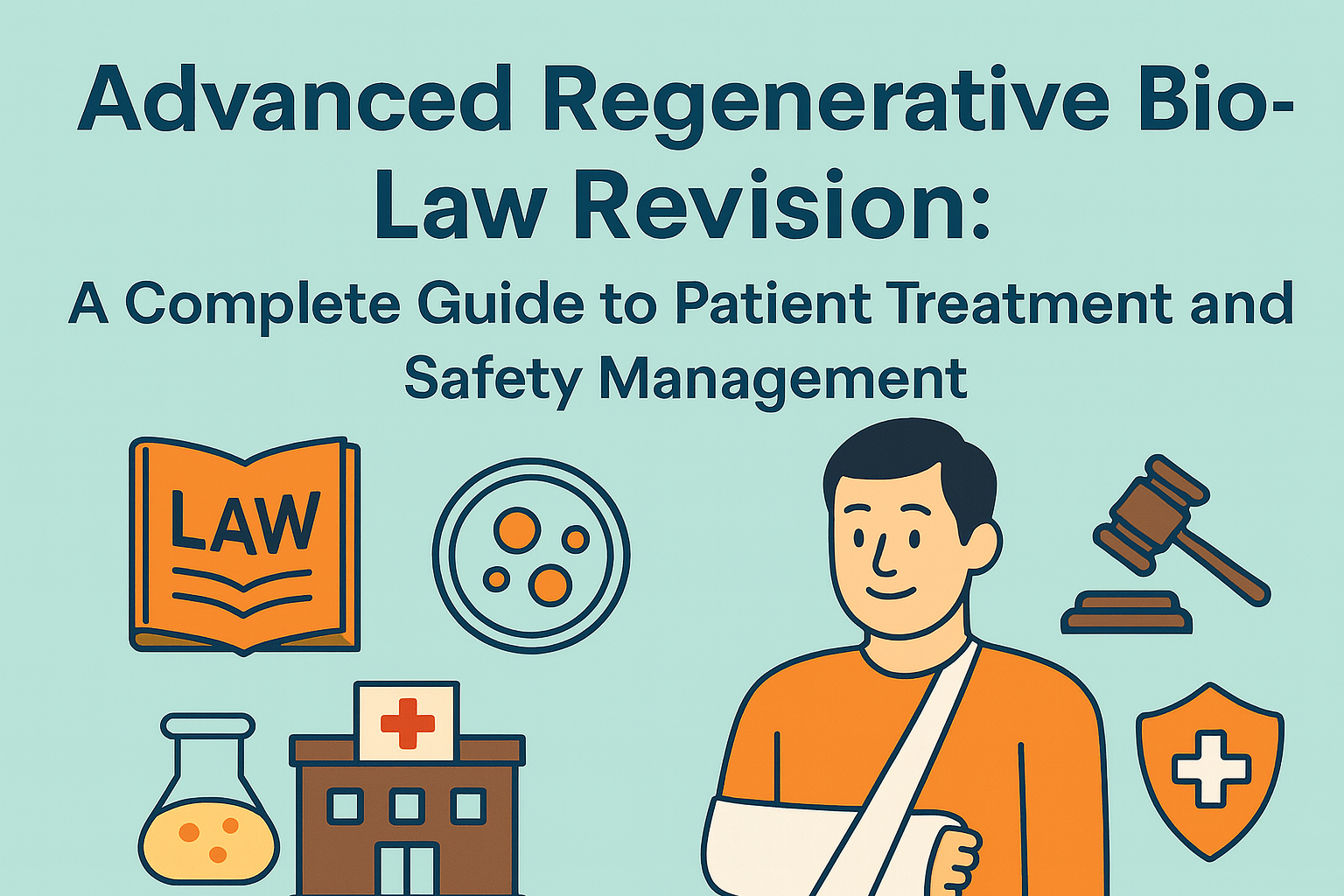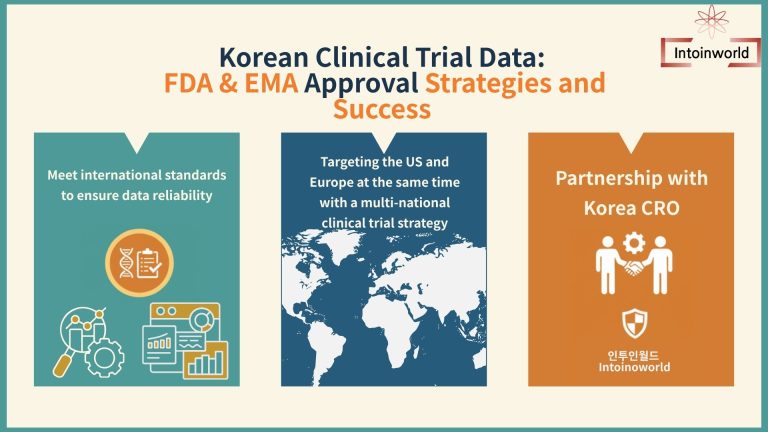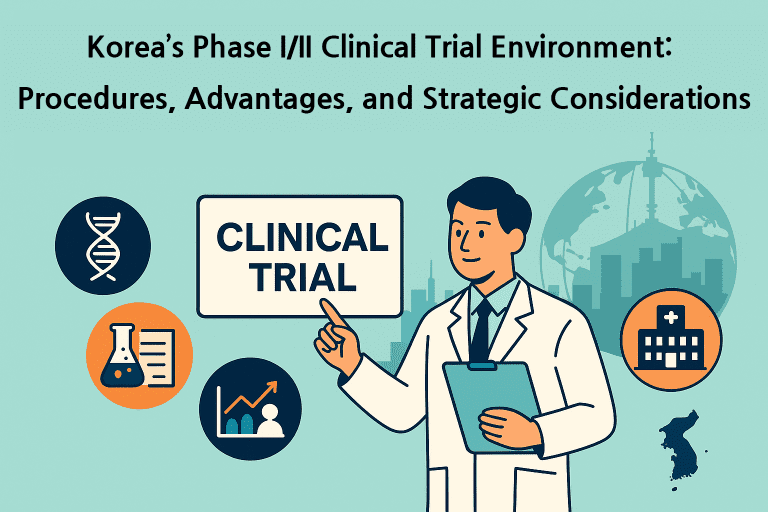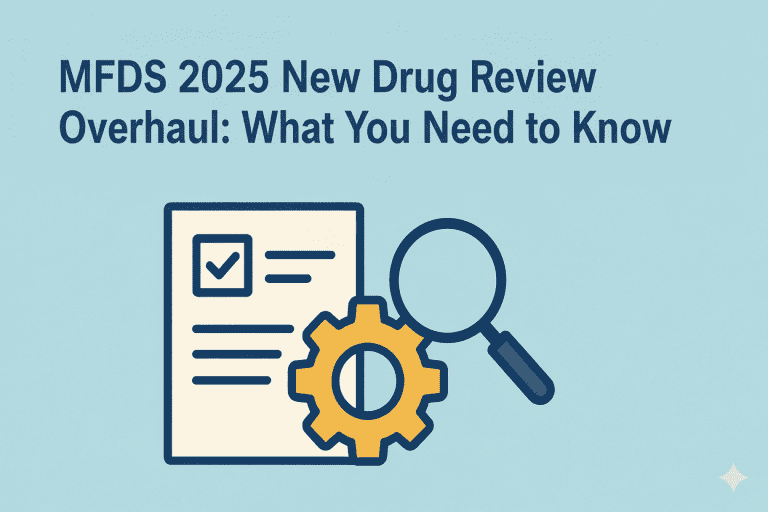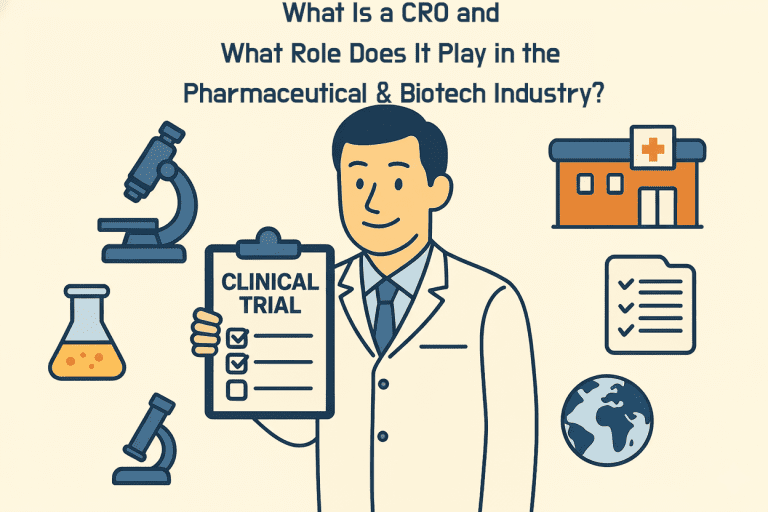Advanced regenerative bio-law revision marks a transformative shift in Korea’s healthcare landscape, effective February 21, 2025. This guide explores the key changes, focusing on expanded patient treatment options and enhanced safety management, offering critical insights for global pharma, CROs, and medical institutions.
1. Background and Turning Point of the Revision
- Effective Date: The revised law took effect on February 21, 2025 (Advanced Regenerative Medical Portal).
- Core Objectives:
- Expanded Access to Advanced Regenerative Medicine: Removal of research participant restrictions allows clinical research to extend to actual treatment applications.
- Strengthened Safety Requirements: Includes transparent treatment cost disclosure, streamlined review processes, and enhanced adverse reaction monitoring (Advanced Regenerative Medical Portal).
2. Key Changes in the Revision
2-1. Removal of Participant Restrictions and Introduction of Treatment
- The elimination of participant limitations now enables clinical research to include patients with milder or early-stage conditions (Medical Times).
- Introduction of Advanced Regenerative Treatment:
- Previously focused on clinical research, the law now permits sustained treatment provision based on proven safety and efficacy, but only through designated regenerative medical institutions following review committee approval (Medical Times).
2-2. Enhanced Cost Transparency and Patient Rights Protection
- Strengthened Pre-Treatment Documentation: Institutions must submit clear details on purpose, target patients, safety/efficacy evidence, and cost justification, subject to review committee approval (Medical Times).
- Mandatory Cost Disclosure: The Ministry of Health and Welfare is obligated to annually survey and publish treatment cost data, with institutions required to provide patients with estimated out-of-pocket expenses (Medical Times).
- Improved Patient Consent Process: Enhanced protection of personal data and treatment understanding, though details are truncated in the original text.
3. Practical Implementation Points
- Institutional Designation: Facilities must meet strict criteria, including advanced equipment, qualified personnel, and cell supply processes, with documented internal audits to prepare for on-site inspections.
- Review Process: Institutions need robust systems for submitting treatment plans, responding to committee queries, and managing safety data.
- Safety Management System: Establish protocols for adverse reaction monitoring, root cause analysis, and consultation with expert panels.
4. Comparison Table
| Category | Pre-Revision (2020) | Post-Revision (February 2025) |
|---|---|---|
| Participant Scope | Focused on severe, rare, incurable diseases | Restrictions lifted, includes mild/general conditions |
| Purpose | Primarily clinical research | Applicable for treatment, expanded to real-world use |
| Cost Information | Limited disclosure | Mandatory pre-disclosure and public data release |
| Review Function | Focused on research plans | Includes treatment plan reviews, expanded on-site authority |
| Safety Management | Basic monitoring | Enhanced adverse reaction definition, investigation, and advisory support |
5. Conclusion and Insights
The February 2025 revision of the Advanced Regenerative Bio-Law represents a systemic turnaround, shifting from a research-centric framework to a patient treatment-focused model. It balances expanded access with strengthened safety. Key takeaways include:
- Startups and Developers: Incorporate treatment planning from the initial design phase.
- CROs: Enhance capabilities in documentation, monitoring, and on-site preparedness.
- Medical Institutions: Prepare for designation requirements, review processes, and safety systems.
Intoinworld is equipped to support this transition, offering integrated services from treatment plan drafting and cost structure design to on-site inspection readiness and review strategy development. As of August 2025, we have uploaded a list of designated regenerative medical institutions and cell processing facility statuses. Interested parties can download these resources for use.

